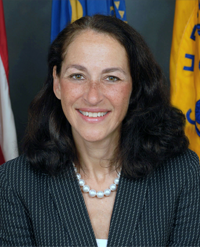By: Anne Pariser, M.D.
From “test tube” to market typically takes a new drug more than 10 years. FDA has been working hard at many points along a drug’s developmental path to reduce this time and bring safe and effective new therapies to Americans as efficiently as possible.
 Much has been said about FDA’s success in using its “expedited approval” tools, specifically Priority Review and Accelerated Approval, to support innovative new drugs. These are important tools that FDA can use once a marketing application is submitted. For instance, last year, FDA’s Center for Drug Evaluation and Research (CDER) approved 39 novel medications, almost half of which benefited from one (or both) of these expedited approval tools. According to a recent FDA report, this is a 63% increase over the average number of annual approvals since 2002.
Much has been said about FDA’s success in using its “expedited approval” tools, specifically Priority Review and Accelerated Approval, to support innovative new drugs. These are important tools that FDA can use once a marketing application is submitted. For instance, last year, FDA’s Center for Drug Evaluation and Research (CDER) approved 39 novel medications, almost half of which benefited from one (or both) of these expedited approval tools. According to a recent FDA report, this is a 63% increase over the average number of annual approvals since 2002.
But less has been said about FDA’s “expedited development” tools, which help foster new drug innovation during the investigational phases of drug research and development, well before a marketing application for a new drug is even submitted to FDA. Among these tools are more frequent and earlier opportunities for communication between FDA and drug developers. FDA’s Fast Track designation for drugs with the potential to address unmet medical needs is an example. For many years, Fast Track has helped speed new drug development by encouraging more communication early in the development process. In 2012, about 40% of CDER’s novel new drug approvals were drugs that were given this Fast Track designation.
Just this past year, the Food and Drug Administration Safety and Innovation Act (FDASIA) authorized FDA to use a new Breakthrough designation for investigational new drugs when preliminary clinical data suggest that the drug may provide a substantial improvement over existing therapies for patients with serious or life-threatening diseases. The concept behind Breakthrough is that, with increased communication, FDA will work with new drug developers to help design efficient ways to study the safety and effectiveness of their drug. This early assistance can help ensure that the results of clinical trials provide the evidence that FDA must have to determine whether or not a drug is safe and effective for approval. A growing number of drug developers are already taking advantage of Breakthrough.
But even before Breakthrough had been authorized by FDASIA, FDA was working to encourage communication opportunities for drug developers to meet with FDA to help make sure their clinical trial designs and development plans offered the best chances of efficient, safe, and timely development and approval. These opportunities are available at the start of a drug’s clinical development cycle: right before the earliest phases of human testing known as the “pre-investigational new drug (IND) phase” (fittingly called pre-IND meetings) and continue throughout drug development.
Early communication in action
Recently, FDA has taken a look at the development times of new drugs that were approved with the benefit of pre-IND meetings and compared them to the development times for drugs that were approved without such meetings. The findings underscore the value of early communication. For those new drugs for which a pre-IND meeting between the drug developer and FDA was held, average clinical development times were substantially shorter than when a meeting was not held. For instance, for all new drugs approved between 2010 and 2012, the average clinical development time was more than 3 years faster when a pre-IND meeting was held than it was for drugs approved without a pre-IND meeting.
For orphan drugs used to treat rare diseases, the development time for products with a pre-IND meeting was 6 years shorter on average or about half of what it was for those orphan drugs that did not have such a meeting. Early communication is especially important for orphan drugs because these products require special attention and thus early talks can be especially beneficial.
Many factors can influence the speed and efficiency of a drug development program. Nevertheless, FDA strongly believes in the value of effective communication during the drug development and approval process, especially for novel development programs when established regulatory pathways do not exist. FDA is committed to working with drug developers to ensure efficient and effective drug development programs whenever possible.
Thirty-nine novel new drug approvals last year is encouraging – one third of which are indicated to treat rare diseases – and many of these new drugs are now making valuable contributions to public health inAmerica. FDA will continue to do its part to help bring safe and effective new drugs to market as soon as possible. We will continue efforts to enhance communication as a critical part of the drug research, development, and regulatory process – especially since it is so clear that communications can make a big difference.
Anne Pariser, M.D., is Associate Director for Rare Diseases, Office of New Drugs, Rare Diseases Program at FDA’s Center for Drug Evaluation and Research







